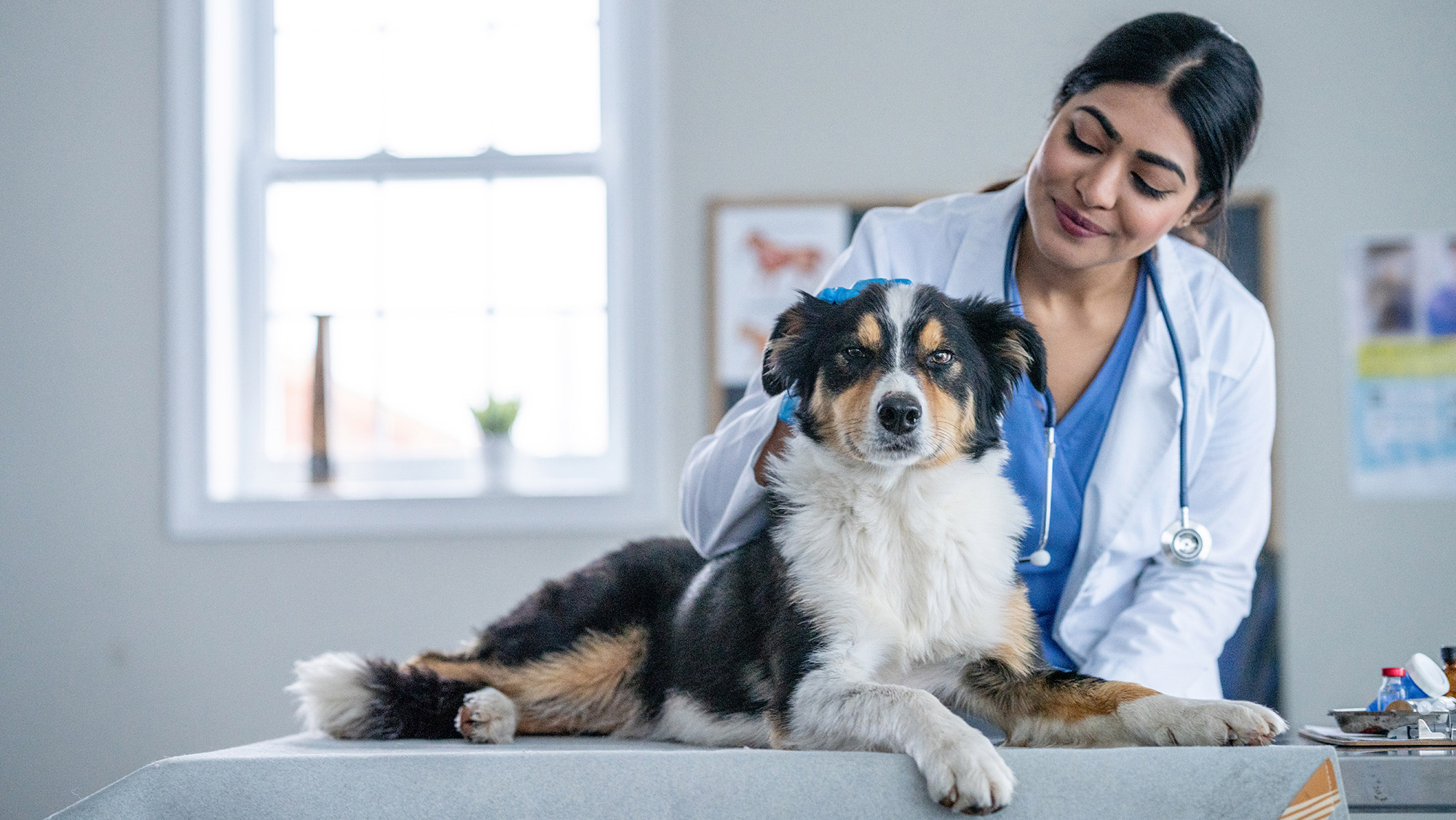
Imagine deciding if your best friend gets a knee replacement. Even with insurance, the cost of the surgery is unobtainable for your friend or their family, and if it fails, the alternatives are drastic: an immobilizing knee fusion, amputation, or worse. How can you choose?
This is the dilemma many pet owners in the United States face when deciding how to treat their pets' knee injuries — and a capstone team of five seniors from the Department of Biomedical Engineering at Texas A&M University is developing a better option.
“Our project is to create a secondary solution, and to do that, we added a couple more parts to the typical knee implant design,” said team member Cole Mandrona. “We needed to find a way to allow joints to be held together and still be able to rotate, flex and bend.”
Their solution is Rev Knee, a workflow that results in a customized implant for canine knee revision surgery. The Rev Knee method starts with uploading CT scans of a knee joint into software that recreates the patient’s unique tibial and femoral point parts.
“We segment the exact shape of their knee,” team member Sampriti Ramakrishnan said. “After that, the segmentations are put into an existing software we modified that can customize the patient’s anatomy. From there, we can 3D print a model of their knee.”
The current knee implant design frequently used in the United States relies on the animal’s ligaments for movement and connection to the upper and lower leg bones. While this approach can provide natural movement and range of motion, it also heightens the risk of surgical failure.

“We’re making something that works if you remove all the ligaments because if there’s an initial problem with one or it gets ruined, then that's the end for that joint,” Mandrona said.
Sponsored by Dr. Brian Saunders, an associate professor at the School of Veterinary Medicine and Biomedical Sciences, the team is part of a partnership initiative between the school and the biomedical engineering department to improve health outcomes for both animals and humans. The team also received guidance from industry professionals.
We were able to get in a meeting with DePuy Synthes, an orthopedics company with Johnson and Johnson,” Ramakrishnan said. “They do the same customized workflow but for humans, so we were able to learn a lot from them. It was a good experience to talk to people that are actually in industry.”
Although the project prioritizes a solution for canine knee replacements, Dr. Balakrishna Haridas, a Department of Biomedical Engineering professor of practice and Southwest-Midwest National Pediatric Device Innovation Consortium deputy executive director, suggested the project could also benefit pediatric patients.
“Our goal is to later translate this for pediatrics,” Ramakrishnan said. “With pediatrics, you still have to think about how the patient is growing and we haven’t made that connection yet. There was importance given to the animals first, which is normally not the case, and that feels good.